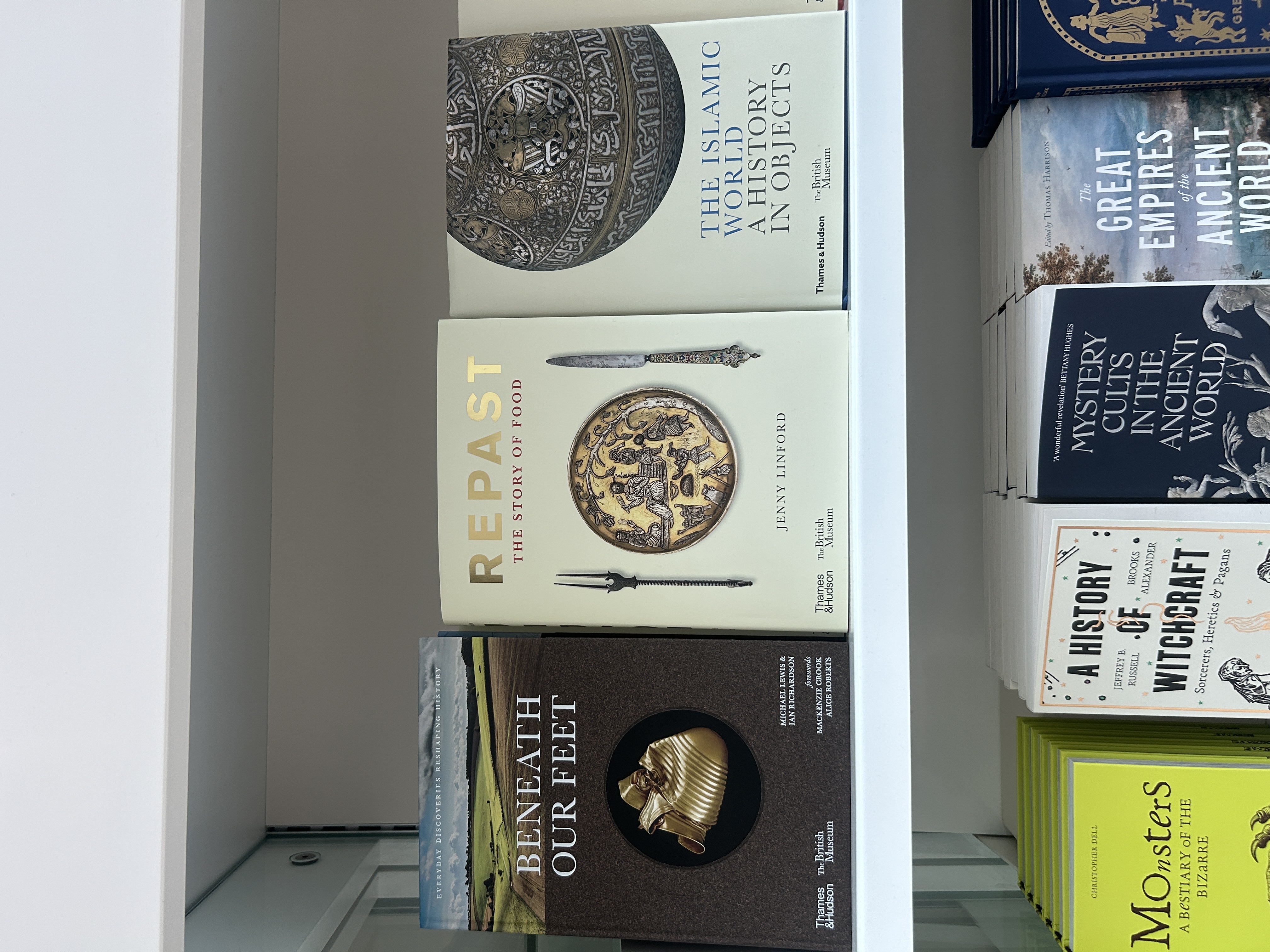REPAST – an author, her book and a very special project; a museum piece from the past and one for the future.
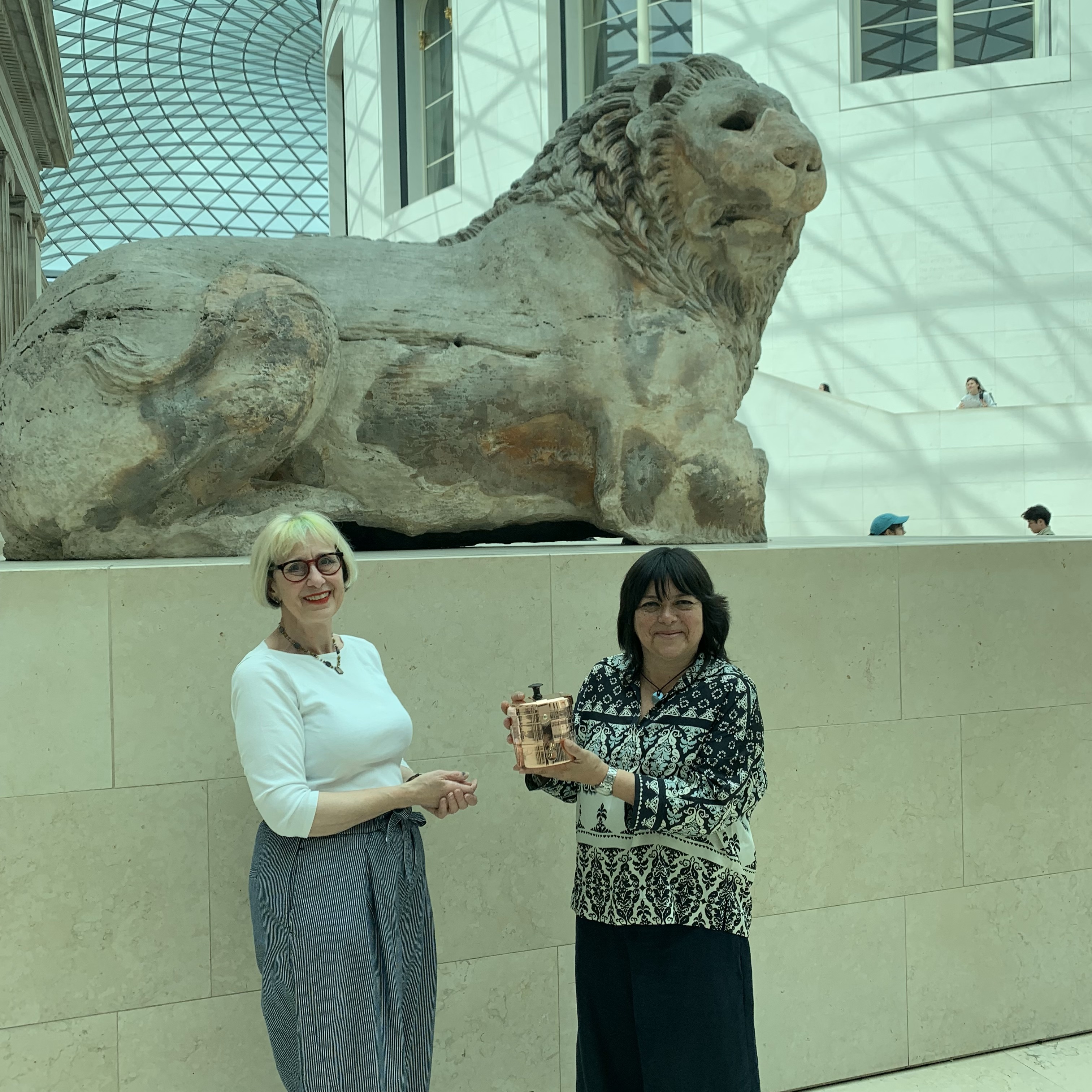
When Jenny Linford sent us a copy of her new book, REPAST, we were inspired to make her a unique thank you present.
As designers and manufacturers, using traditional skills and decades old machinery we were fascinated by the premise of REPAST, a deliciously fascinating, expertly written global tour of cooking, eating and drinking through objects in the British Museum collection.
Our cookware is produced by methods employed over not just centuries, but millennia and Jenny’s book, which took two years to write and was authored in collaboration with experts at the British Museum, focuses on artefacts in the Museum’s collection – from ancient clay cooking vessels to exquisite gold cups – spanning multiple continents and dating from prehistory to the modern day.” We feel an affinity with past generations of metalmasters, who have turned their hands to producing beautiful and useful vessels to help nourish body and soul.
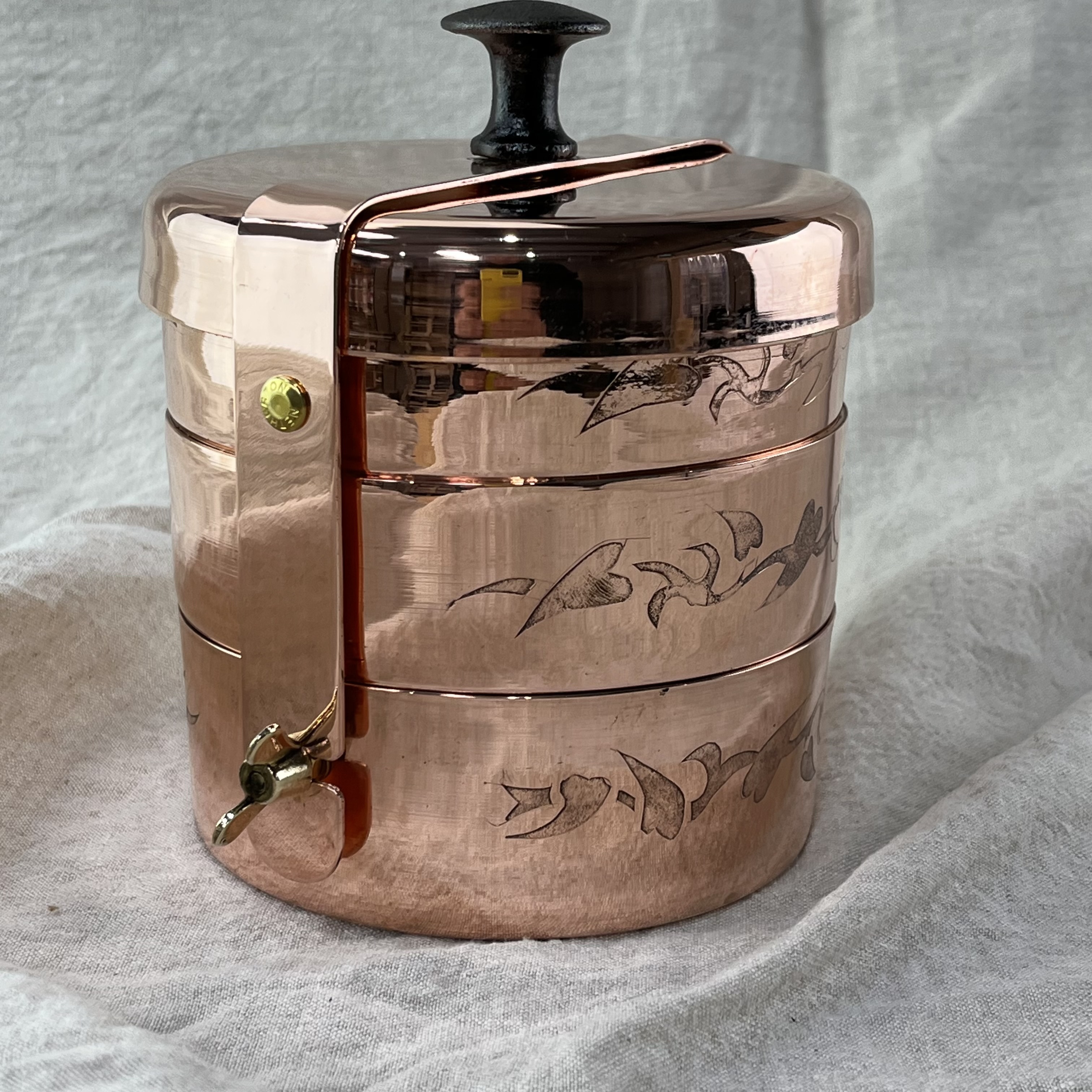
We went through the book looking for inspiration and this example of an Egyptian Mamluk dynasty lunch box (15th -16th century), one of the British Museum’s treasures caught our eye. What we set out to do was make a Netherton Foundry interpretation. We did not want to make a copy, rather something that captured the beauty of the original and the essence of ourselves.
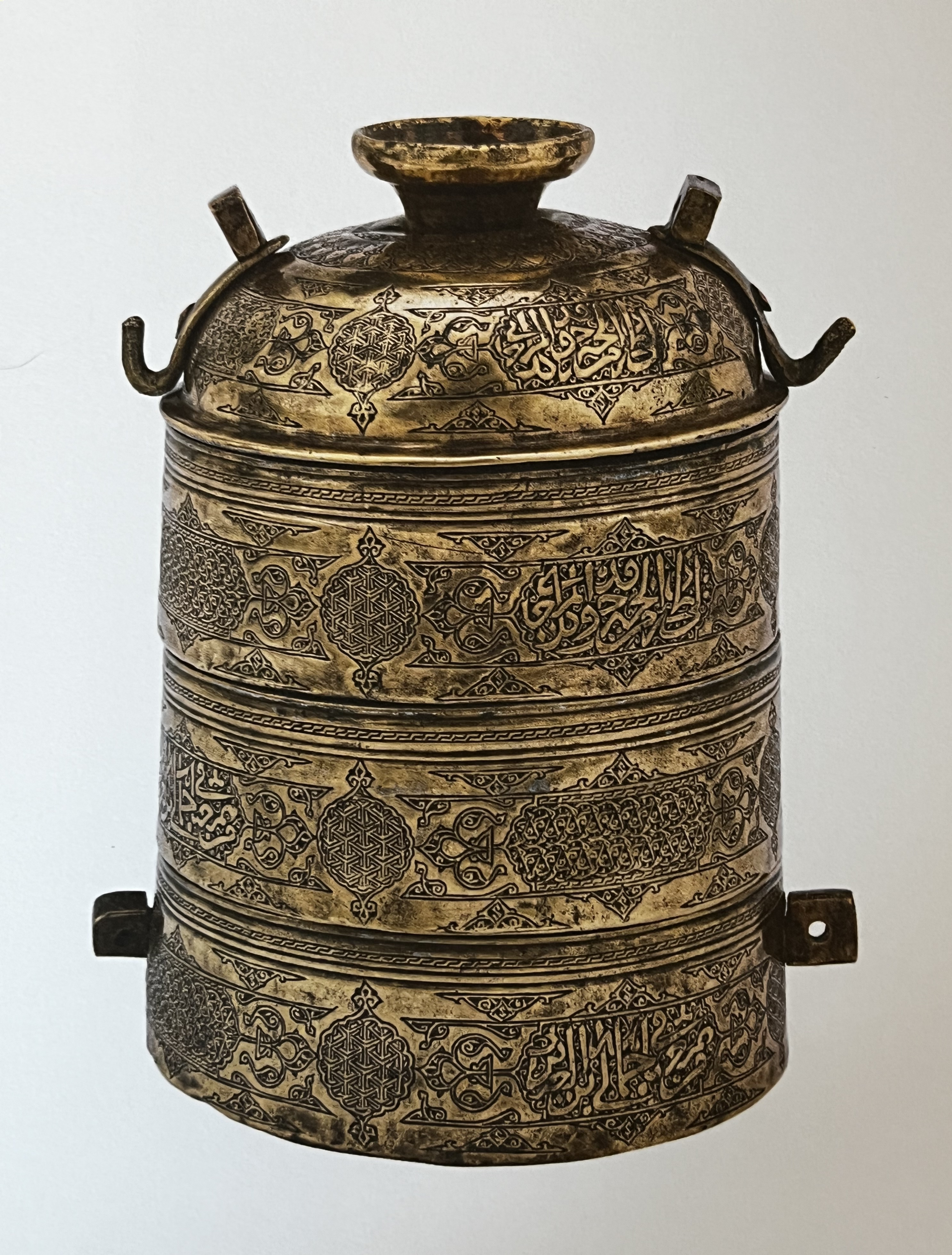
Ryan first made 3 beech tools on which to spin the individual tins, and as these had to nest together, this was challenging. With copper being so expensive, he practised the pieces in iron first! Once he was happy that they would sit neatly together, he spun the copper versions.
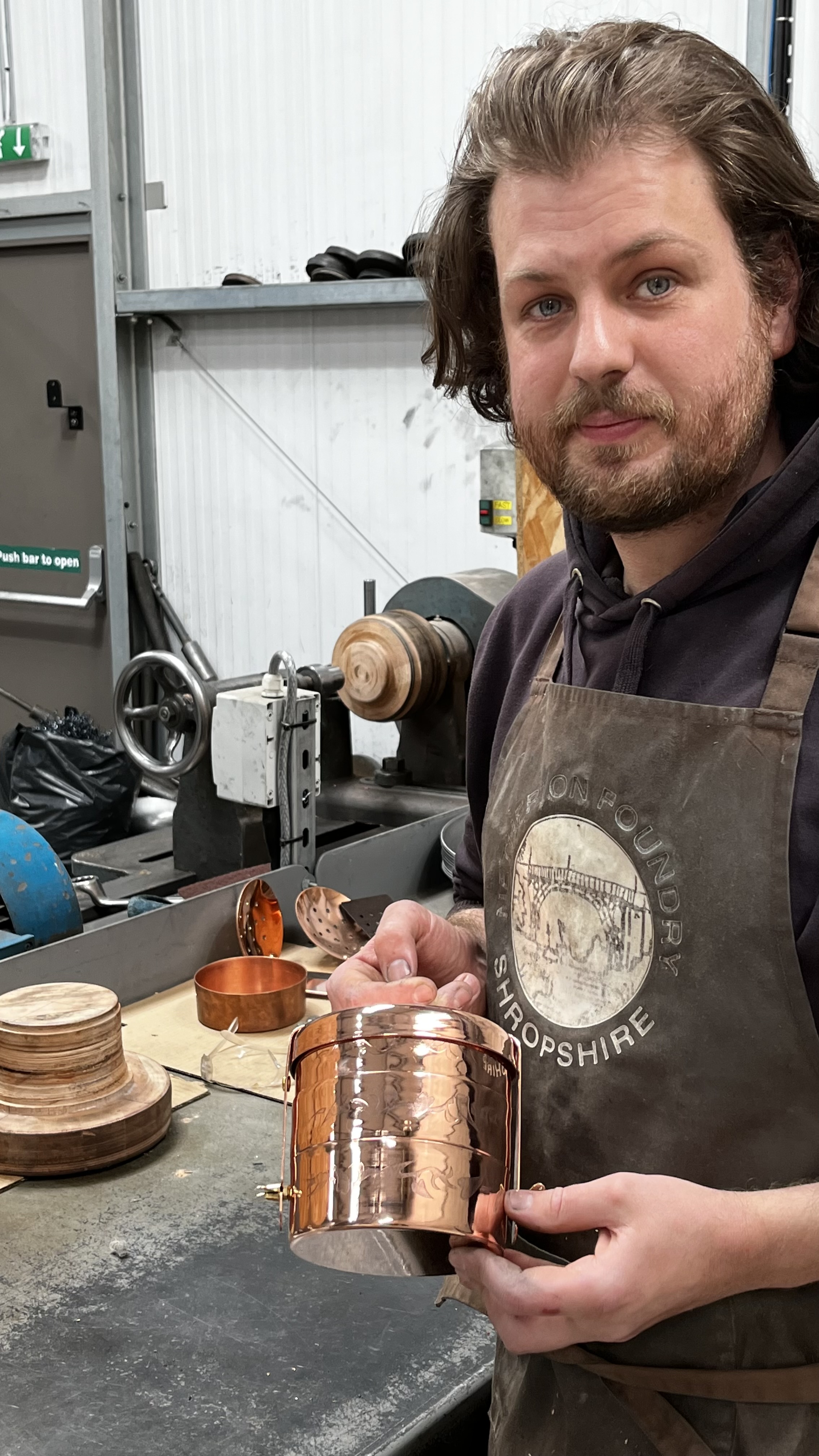
There is clearly a piece missing from the museum’s exhibit, the mechanism that held the layers together giving us little information to go on. But Neil and Ryan put their design heads together and figured out that it must have been some form of strap mechanism. In keeping with our approach to design and manufacturing, they chose to use our beloved wing nuts; so although this is a unique piece, it fits within the Netherton family.
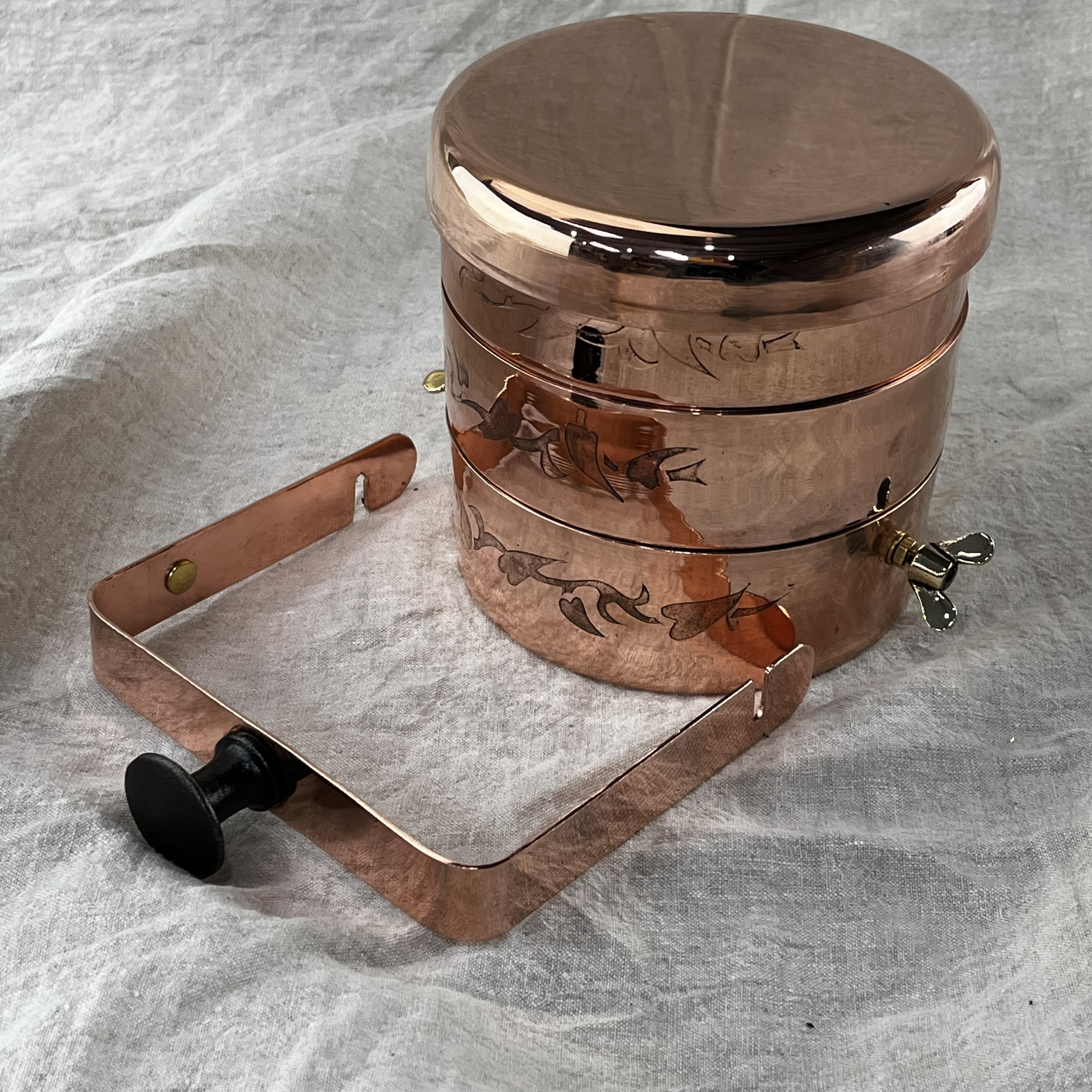
The inscription on the ancient box translates as “He who contemplates my beauty will find me a delight to the eye. “
And so the surface decoration for Jenny’s tiffin tin had to be something very special too. Leaning in to our Arts and Crafts design heritage, Neil did the initial drawing with pen and paper. Then, after protecting the surrounding area with masking tape, the design was acid etched on to the tin’s surface, using a historic approach to pickling and etching copper and brass, quite possibly similar to the method used by the Mamluk Egyptians. Toby, a bio-chemistry graduate made the etching fluid from everyday household chemicals.
Last, but by no means least came the polishing process, started by Ryan using some special mops sourced from Metal Finishing Supplies in Cannock to get right inside the boxes and finished, using a lot of elbow grease, by Mandy.
This photo shows Mandy putting the finishing flourishes to our copper champagne buckets.
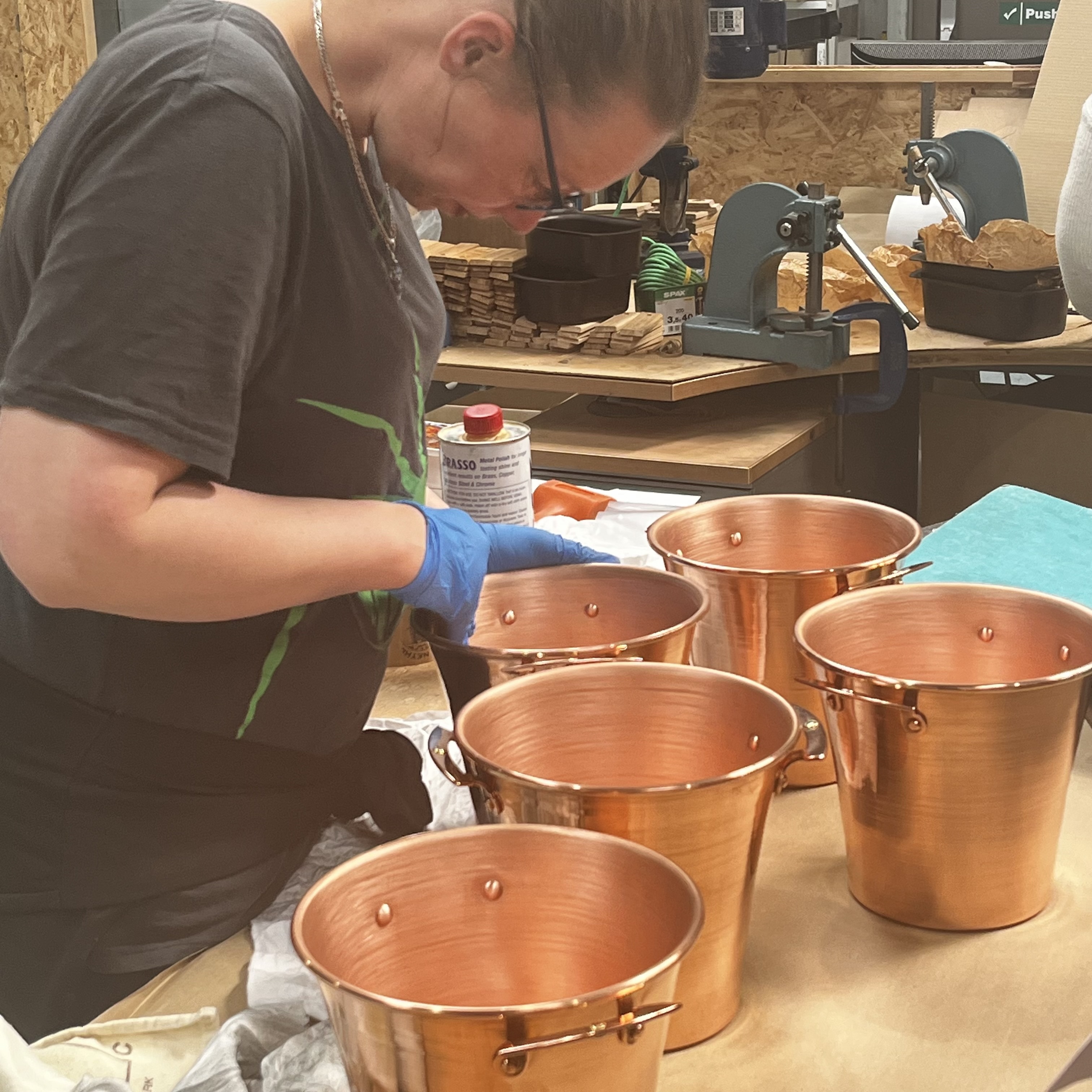
This was far too special an item to entrust to the postal service, so we arranged to meet up with Jenny at the British Museum to present this to her in person and talk to her about the book.
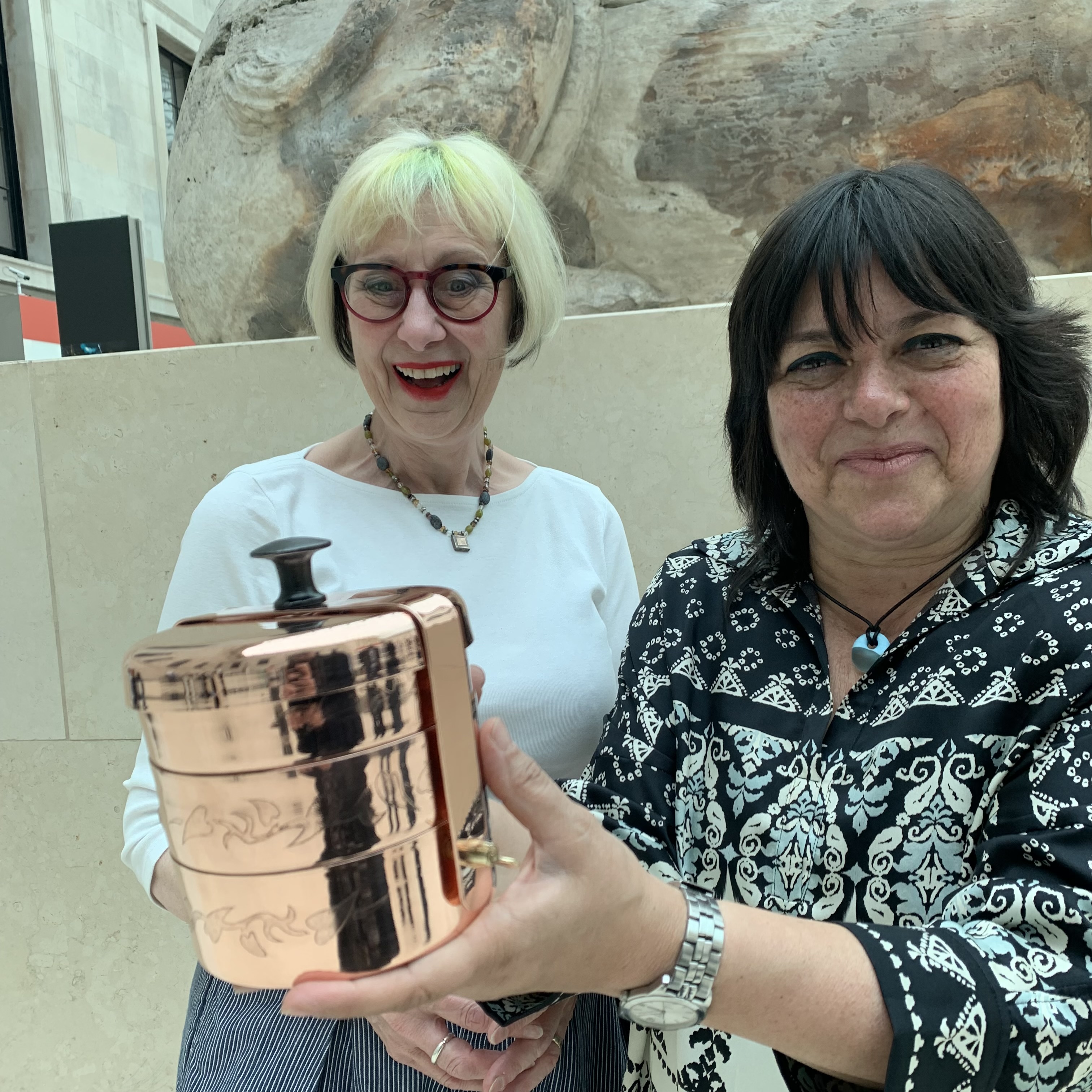
She described how the museum had approached her with the idea about writing about items from the collection associated with food; how she arrived at the idea of a chronological theme for the book, leading us from the earliest days of our hunter gatherer forbears through to the concept of restaurant eating and then a glimpse into the future. Befitting the sections related to coffee and chocolate, we joined her at a celebration of the book at Colonna and Smalls, where we enjoyed not only some wonderful company, but also coffee tasting presided over by company founder Maxwell and chocolate tasting with Spencer and Genevieve from the fabulous Cocoa Runners.
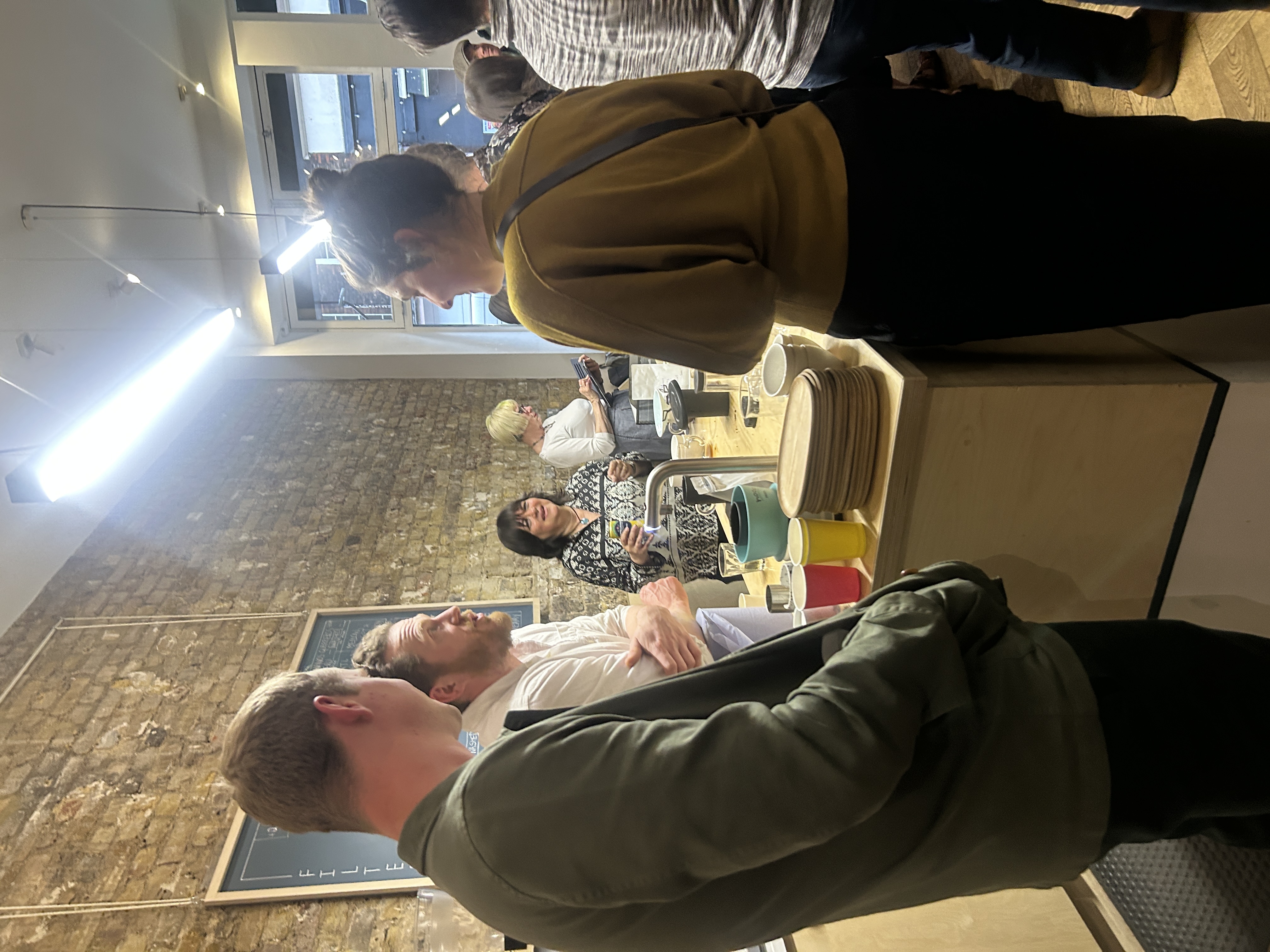
The representatives from the British Museum, in attendance at the event, could be seen sizing up the tiffin tin and told us that they could foresee a place for it in the (distant) future. But Jenny has said they will not be getting their hands on it any time soon!
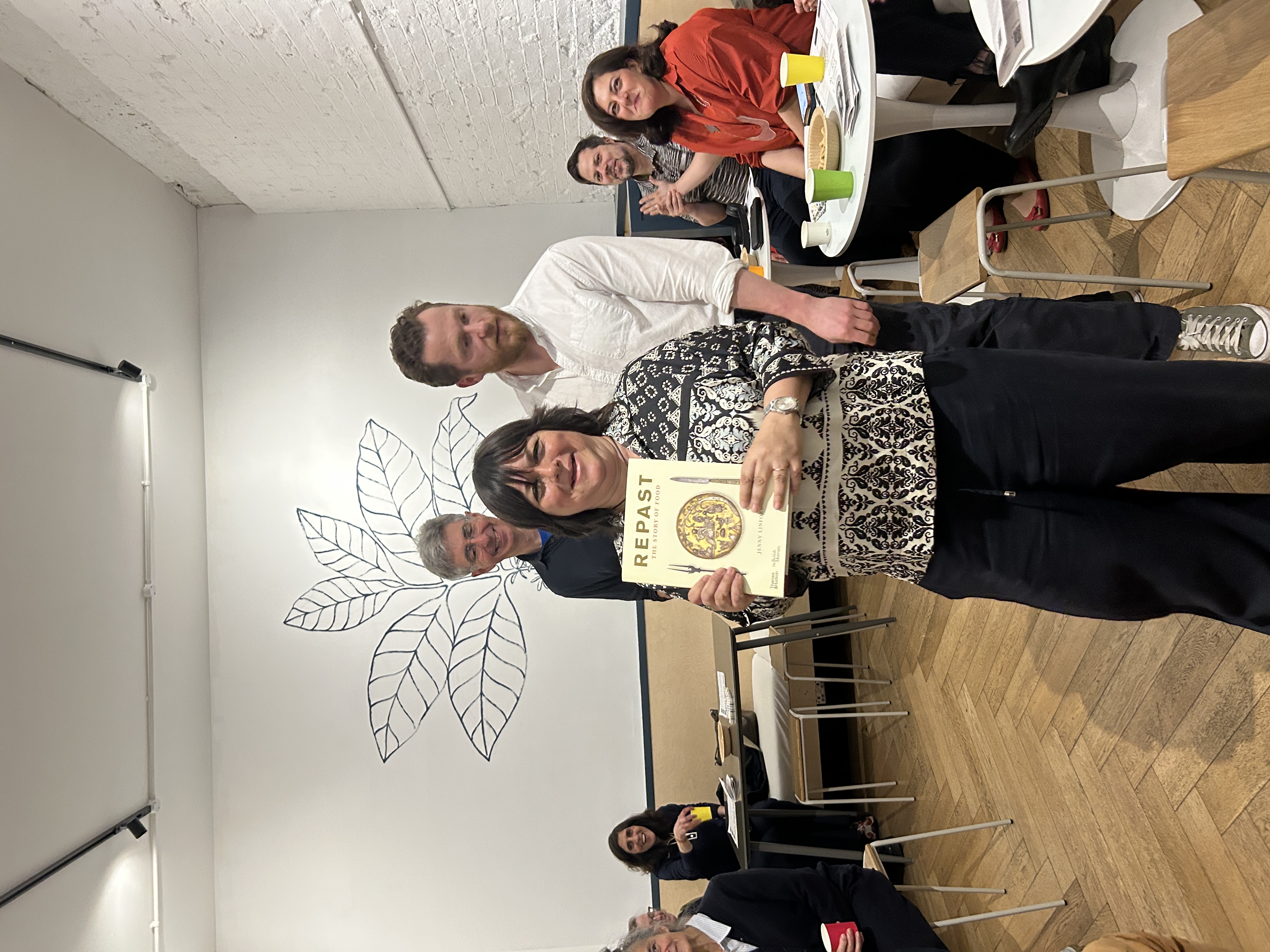
If you already have a copy of REPAST, a visit to the museum to see the original artefacts is highly recommended. And if you haven’t got a copy, then you can buy one at the museum or order it through your local book shop.
